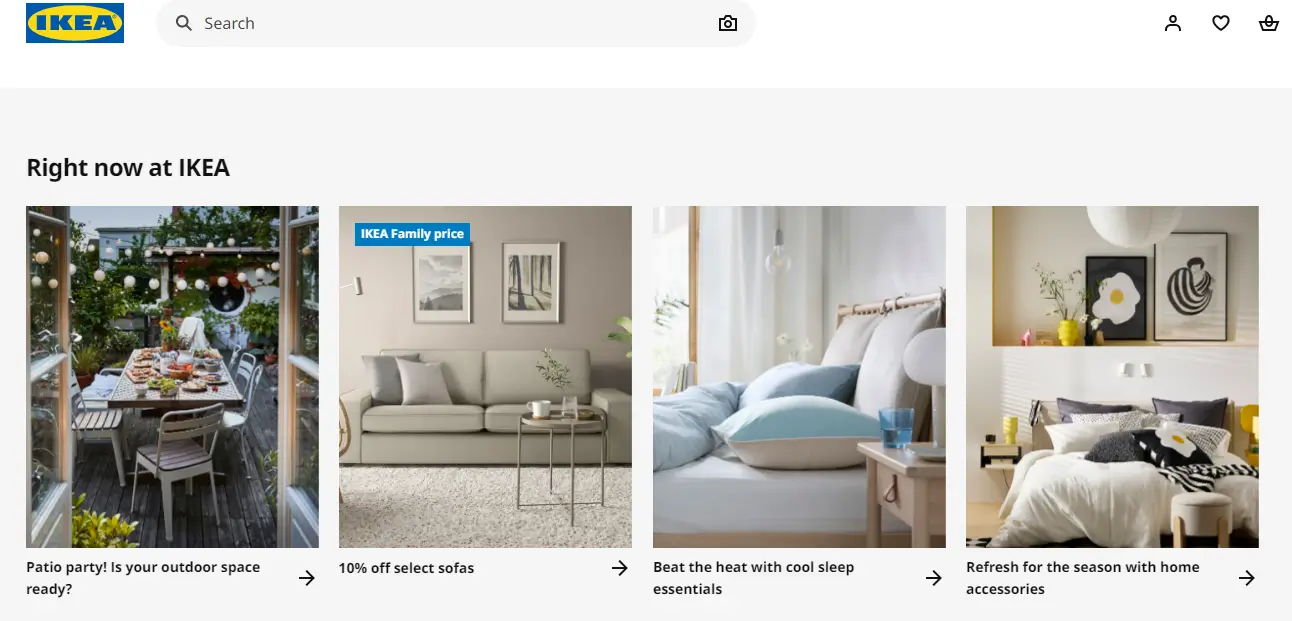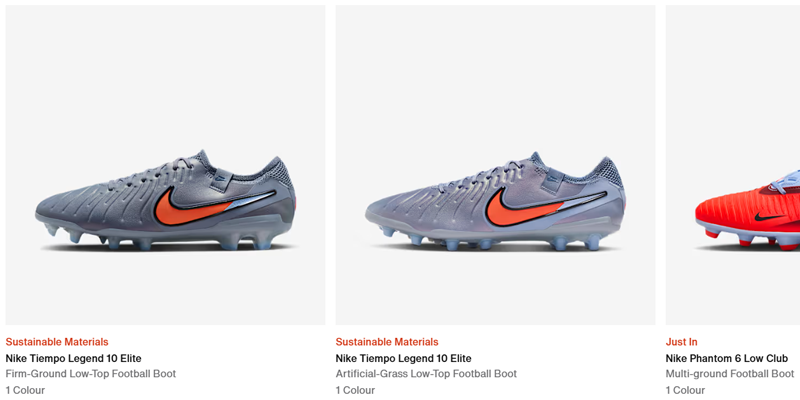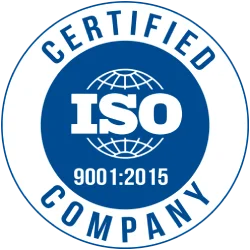Clearing Common Misconceptions About CGI Product Rendering
Nowadays, visuals are everything for customers and investors, even employees and stakeholders. While it is nice to have high-quality, crisp and realistic images; it has become far more essential than one could imagine. More companies are turning to CGI product rendering.
The growth is nothing less than explosive, as the 3D rendering market is expected to go from a value of $4.47 billion in 2024 to $26.65 billion by 2034.
CGI (Computer-Generated Imagery) is unmatched when it comes to flexibility and realism. But there are still some myths that persist about its cost, quality, requirements, and application. This misconception holds businesses back from experiencing what CGI has to offer.
So, we have taken it upon ourselves to debunk some of the common misunderstandings people have about CGI product rendering.
Common Misconceptions About CGI Product Rendering
-
Myth 1: "CGI Product Rendering Is More Expensive Than Photography."
-
Explaining the Myth
Most companies assume that the advanced technology and specialized skills involved in CGI product rendering are too costly. It’s a misconception that leads businesses to shy away from exploring using 3D visualization for products, fearing it will strain their budget.
-
The Reality
While it’s true that costs for a complex 3D model might be higher, it’s only in the initial stages. In the long term, the savings with product rendering are quite significant. Costs related to repeated photoshoots, travel expenses, shipping, prop rentals, and even models are eliminated.
Plus, you can reuse and repurpose the 3D model, making CGI rendering incredibly cost-effective for creating variations in colors, materials, or even entirely new product lines.
As a matter of fact, the global average price for five furniture product photographs is $11,076, whereas the market rate for the same number of images shot with 3D photography is just $2,000.
-
Why it Matters
You have to understand the return on investment (ROI) to rid yourself of budget efficiencies for your e-commerce visuals and overall product visualization strategy.
-
-
Myth 2: "CGI Renders Look Fake/Unrealistic."
-
Explaining the Myth
A common product visualization myth is that computer-generated images lack the authenticity of real photos. The thought is that they appear "plastic" or "too perfect." It’s a misconception that stems from earlier, less sophisticated 3D product visualization efforts.
-
The Reality
Actually, in the earlier days of 3D, it was true that CGI images looked “fake” or “plastic.” But advancements in photorealistic rendering technology, such as physically based rendering (PBR) and ray tracing, have made photorealistic product renders almost indistinguishable from traditional photos.
Skilled 3D artists precisely craft textures, lighting, and subtle imperfections – like dust, scratches or fingerprints – during post-production to achieve ultimate realism. Numerous major brands today utilize hyper-realistic CGI for their marketing assets, proving that CGI rendering can indeed look incredibly real.
-
Why it Matters
High-quality 3D product rendering builds trust among the customers and improves brand perception. Ultimately, you see a boost in conversions and sales.
Fact: Shoppers who view 3D product images are 11 times more likely to purchase the item. (Source: CGTrader)
-
-
Myth 3: "CGI Product Rendering Takes Too Long."
-
Explaining the Myth
Another common assumption about CGI is that complex 3D modeling and rendering processes are always time-consuming and delay product launches.
-
The Reality
While it can take a lot of time to create a model of a product, only the 3D modeling process time-consuming. For subsequent renders, variations, and updates, the process is much faster than traditional methods.
Imagine what you would have to do to show the product in another style for a new marketing campaign. If it were the traditional method, you’d need to get the product in the required style, set up the shoot, transport it, and make other arrangements. With CGI, all it takes is a few clicks to edit the model to change the color or style. There’s no need for another full-blown photoshoot. It means you can rapidly create iterations for the various design changes and marketing adjustments.
Besides, CGI product rendering also allows you to start creating visuals before physical production even begins, speeding up your time-to-market and making it possible to start marketing activities early.
-
Why it Matters
In today’s market, you can lose a lot by not launching a product fast enough or being late to a fashion trend. Speed and flexibility matter to the bottom line, and CGI rendering can deliver them while also being resource efficient.
-
-
Myth 4: "Customers Will React Negatively to CGI."
-
Explaining the Myth
The fear is that customers may not react positively to photorealistic visualization. Manufacturers sometimes believe that customers might think they are being dishonest by using CGI and are unwilling to show the real product. For many brands, it becomes a matter of risking their reputation, which they don’t want to do.
-
The Reality
Customers today actually know more about manufacturing processes than you think. The internet gives them access to a lot of information, and many consumers (53%) do their research before they buy something. Besides, they are already aware that companies use CGI for websites, online stores, eCommerce platforms, and promo materials.
-
Why it Matters
Visualizing is important for customers; not everyone has mastery over imagining what a product will look like from mere descriptions. Consumers need to see how the product will look, even if it doesn’t exist yet. And that is where CGI plays a big, BIG role. Customers love it when they can see a product from every given angle. They don’t want much to be left to their imagination when they have to part with their hard-earned money.
They also love seeing how the product will look in a real-world setting, which is what lifestyle images help visualize.
-
-
Myth 5: "CGI Will Completely Replace Product Photographers."
-
Explaining the Myth
Most people believe that using CGI or photography is an "either/or" situation; you use either one or the other. CGI delivers near flawless and hyper-realistic images. But does it mean the end of traditional product photography?
Well, no. It’s just a misconception that causes unwarranted anxiety among the photography community.
-
The Reality
The truth of the matter is CGI is a powerful complementary tool, rather than a replacer. Many brands use a hybrid approach to product visuals. They use the strengths of CGI rendering and photography. For example, high-quality photorealistic product renders are used for the main page on eCommerce platforms, while lifestyle shots are taken with human models using traditional photography.
Photographers can also transition their skills to virtual photography and CGI art direction. Alternatively, they can also work with 3D artists to create stunning product visuals.
-
Why it Matters
Combining traditional photography and CGI can help you maximize your visual assets and get comprehensive and engaging product visuals. You get the best out of both the methods when you know how to make them complement each other.
-
-
Myth 6: "CGI is Too Complicated"
-
Explaining the Myth
3D visualization, from 3D modeling and texturing to lighting and rendering, is complex and businesses often believe it requires a team of highly specialized experts and significant investments in a "render farm" to be effective. Most perceive it as a daunting, inaccessible technology meant only for Hollywood blockbusters and massive corporations. It’s primarily why many small businesses hesitate to explore digital product visualization.
-
The Reality
High-end CGI is indeed complex. But the technology has become much more accessible before. There are free, open-source, and even user-friendly software for those who want to learn and make 3D models and renders. There’s also a wealth of online tutorials that have made it far easier for beginners and even professionals to learn new techniques or get help from the 3D community.
Cloud-based services have also been on the rise, making powerful rendering capabilities available on-demand and eradicating the need to buy expensive hardware. Besides, nowadays you also have AI-powered 3D visualization tools that can help you create 3D content. Whether it is a text-to-3D or image-to-3D prompt, you can generate 3D models and textures in seconds. You are awash with options to keep the costs as low as possible.
-
Why it Matters
Avoiding CGI just because you think it’s complicated robs you of the opportunity to reap its many benefits. While it can be complicated at times, it’s no longer the insurmountable hurdle that it used to be, thanks to AI-powered tools, user-friendly software, and the existence of third-party 3D services agencies. Modern-day CGI product rendering is now a solution that can be scaled and tailored to fit various budgets and companies.
-
-
Myth 7: "Only Big Brands Can Benefit"
-
Explaining the Myth
People often look at high-quality CGI product renderings and assume that they are part of multi-million dollar campaigns by massive corporations. It has led to the misconception that only big brands can afford it and reap the rewards.
-
The Reality
3D product rendering levels the playing field for everyone. Small and medium-sized enterprises (or SMEs) can enjoy the same benefits and cost-effectiveness of CGI rendering as big companies. For a startup, traditional product photography can be a financial strain, requiring investments in studio rentals, props, travel, professional photographers, and models for every new product or variation.
With CGI, they can quickly and cheaply get stunning product visuals, in all their different variations, from various angles, in an array of settings.
Companies today are actually quite lucky, as there are free tools, open-source software, and AI-powered tools that make 3D technology easier to use. For those that lack either the budget or skills to pull off 3D visuals on their own, there are also plenty of service providers that do everything from 3D modeling to texturing, lighting, rendering, etc.
-
Why it Matters
CGI product rendering being accessible means that small businesses are no longer constrained by budgets and logistics of traditional photography. SMEs can use virtual photography to produce high-quality marketing assets and enhance their brand perception, making them more competitive in the market.
-
The Real Benefits of CGI Product Rendering
Reduced Returns : CGI product visuals have a great influence on a customer’s ability to visualize. They make it possible for consumers to examine a product even without holding it or seeing it in person. Shopify found that returns reduced by 5% for one brand that used 3D visualizing (and AR). Their cart conversion also increased by 3% and order conversions increased by a whopping 40%.
Unmatched Flexibility: You can easily create product variations (color, material, environment etc.) and shoot from different angles using a single 3D model.
Consistency: Helps maintain a uniform aesthetic for your brand across all your marketing channels: from your website to eCommerce platforms and social media.
Faster Marketing Capabilities: You can promote your products (especially new ones) before they even exist physically. It works really well if you want to open up bookings for the product before they are released to the market. CGI greatly accelerates your time-to-market.
Interactive Experiences: CGI product renderings are building blocks for engaging experiences like augmented reality (AR) product views, virtual reality (VR) product experiences (like try-ons) and 360-degree views. All of these tools enhance the shopping experience.
Sustainability: 3D visualization reduces the need for physical prototypes, travel for photoshoots, and minimizes material waste. Your carbon footprint associated with traditional product photography is, therefore, reduced.
Popular Brands That Use 3D Visualization
-
IKEA
 image credits: IKEA
image credits: IKEAIKEA has been on the cutting edge of creative product visuals, investing heavily in 3D product visualization as early as 2005. By 2014, 75% of their catalog was CGI. So, it’s safe to say that now, 3D furniture visuals practically dominate their catalogs. It’s not that they’ve completely done away with traditional photography. IKEA is the perfect example of a hybrid approach, where both 3D and photography are used.
Now, IKEA has also expanded into AR (IKEA Place app) and AI (IKEA Kreativ) to improve product visualization and customer experiences.
-
Nike

Nike frequently uses CGI for showcasing new shoe designs, athletic apparel, and even illustrating advanced material technologies. They are quite well-known for using 3D product configurators to increase and boost the shopping experience. They often create dynamic animations of products in action or use hyper-realistic still renders to highlight intricate details.
A recent example of their use of CGI product rendering is their "Nike AIR" campaign (AIR stands for Athlete Imagined Revolution). In the campaign, they combined 3D technology and generative AI to create a collection of 3D-printed footwear.
-
Audi
Car manufacturer Audi is using 3D and virtual reality to design, perfect, test, and advertise their products. For example, they use 3D simulations of the car’s body to foresee the effects of component and assembly tolerances in the vehicle's image. Results of the simulation are then realistically visualized in virtual reality so the experts can change the design and development process without the constraints of time and place. There’s also almost no additional in this process.
About 10 years ago, Audi created history with "Birth", a fully CG ad, where an Audi R8 model gave birth to a sleek RS 3 Sportback in a futuristic car birthing room.
To Wrap it Up
Contrary to popular belief, CGI product rendering is actually a versatile, cost-effective, and highly realistic visual generator for modern businesses. It doesn’t matter how big or small your business is; 3D product rendering offers incredible speed and efficiency and unmatched flexibility in product visuals.
Don't let outdated myths about product visualization hold you back from harnessing its power.
FAQ's
Traditional photography is where a photographer uses a camera to capture light reflected off a physical object, which results in a picture. In CGI, you digitally create an image using specialized software, 3D models, textures, materials, lighting, shading, etc. In CGI, there is infinite control over every aspect of the digital image.
To make a 3D product render, you need to create a 3D model (often from CAD files), apply textures and materials, set up the lighting (in the software), and then render the final image using specialized software. Complex projects are sometimes done using a render farm.
A wide variety of industries use CGI product rendering. Some of them are furniture, automotive, electronics, fashion, jewelry, home goods, architecture, and even the food industry. Basically, any industry that needs high-quality product visuals uses it.
A render farm is a collection of computers that process together to produce computer-generated imagery (CGI) and other 3D content.
Absolutely, yes! With increasing accessibility of software and freelance 3D artists, small businesses can use CGI to stand on the same level and compete with larger brands by presenting professional and consistent e-commerce visuals.
Contact Us

